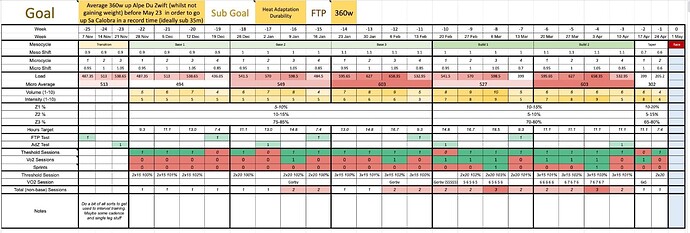Thanks to some of the excellent discussions on here I decided to make a training plan for next years trip to Mallorca to try get under 35min up Sa Calobra (38m currently).
Plan
Sources of Inspirations
N.B. for the workouts in the velonews and welovecycling articles I (&Chris Starkey) recreated the workouts in Intervals and made them public if anyone is interested.
Background
28 yo male
82kg
3 years cycling (with some focus on training smart)
typically 10-12hrs per week but can find more for this goal
normally just ride my bike outdoors (mindful to avoid ‘hardish’ middle stuff but obviously occasionally enjoy a long blast) in summer w power meter and retreat to indoors for winter (250-270w for 2-3hrs or the Gorby)
Sprint numbers are slightly outdated but all others are from this year, don’t think I’ve ever done an hour max effort
Questions
- Overall thoughts?
- Riding without fans. Will it help get heat acclimatised or is the potential reduced numbers outweighing this?
- How do you increase load/fitness if you’re also increasing FTP?
- Should vo2 workouts be max effort?
- Do you need anything more complicated than z2, Gorby, 2x20 (&recovery)?
- How do you increase intensity? Is this just making the HIIT sessions harder or more nuanced?
- How to do structured training outdoors?
- How frequently to mix up vo2 sessions?
- How much difference is required?
A lot in here but any thoughts you had would be greatly appreciated. As I’ve seen from the low intensity discussion there are a lot of fellow avid learners out there so curious to see what you think.


